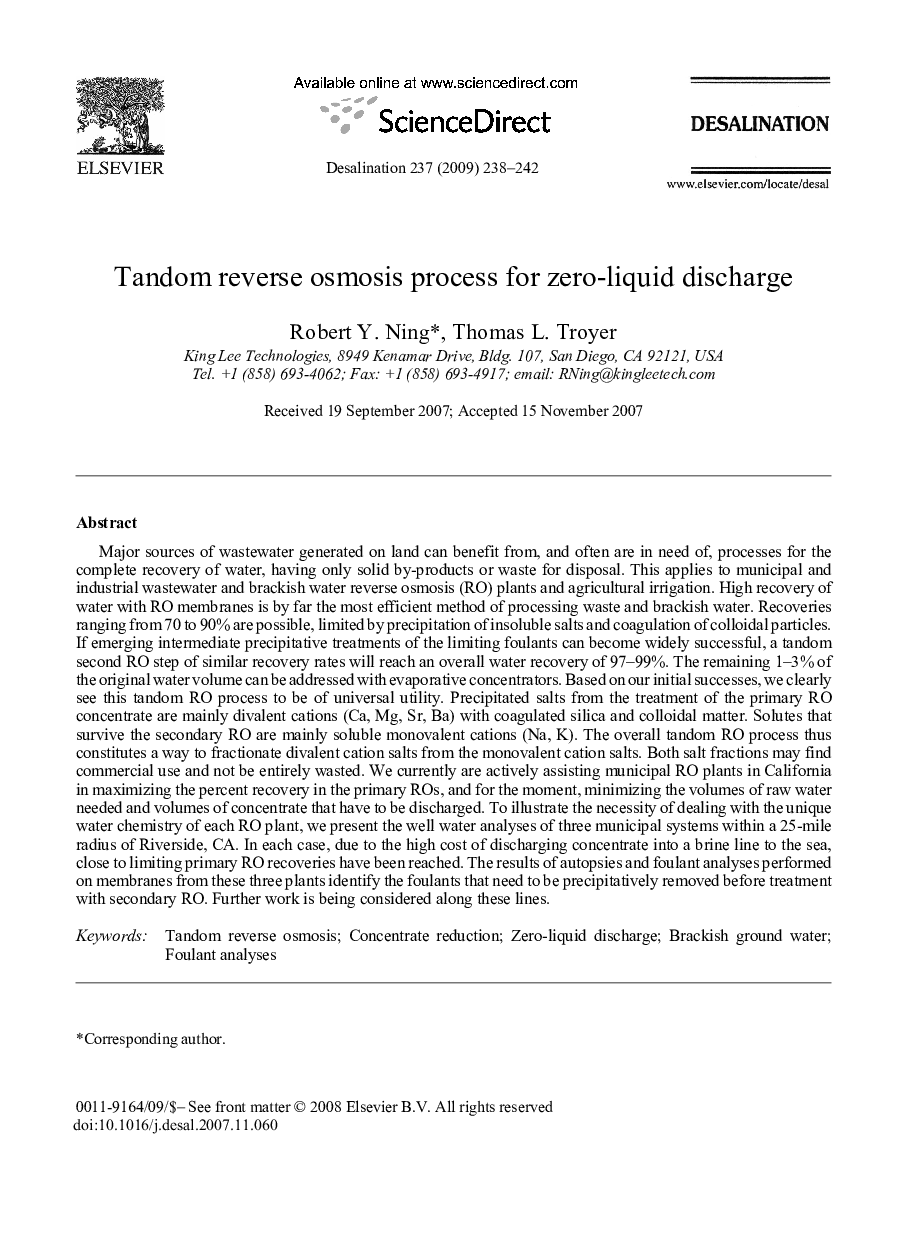| کد مقاله | کد نشریه | سال انتشار | مقاله انگلیسی | نسخه تمام متن |
|---|---|---|---|---|
| 626995 | 1455453 | 2009 | 5 صفحه PDF | دانلود رایگان |

Major sources of wastewater generated on land can benefit from, and often are in need of, processes for the complete recovery of water, having only solid by-products or waste for disposal. This applies to municipal and industrial wastewater and brackish water reverse osmosis (RO) plants and agricultural irrigation. High recovery of water with RO membranes is by far the most efficient method of processing waste and brackish water. Recoveries ranging from 70 to 90% are possible, limited by precipitation of insoluble salts and coagulation of colloidal particles. If emerging intermediate precipitative treatments of the limiting foulants can become widely successful, a tandom second RO step of similar recovery rates will reach an overall water recovery of 97–99%. The remaining 1–3% of the original water volume can be addressed with evaporative concentrators. Based on our initial successes, we clearly see this tandom RO process to be of universal utility. Precipitated salts from the treatment of the primary RO concentrate are mainly divalent cations (Ca, Mg, Sr, Ba) with coagulated silica and colloidal matter. Solutes that survive the secondary RO are mainly soluble monovalent cations (Na, K). The overall tandom RO process thus constitutes a way to fractionate divalent cation salts from the monovalent cation salts. Both salt fractions may find commercial use and not be entirely wasted. We currently are actively assisting municipal RO plants in California in maximizing the percent recovery in the primary ROs, and for the moment, minimizing the volumes of raw water needed and volumes of concentrate that have to be discharged. To illustrate the necessity of dealing with the unique water chemistry of each RO plant, we present the well water analyses of three municipal systems within a 25-mile radius of Riverside, CA. In each case, due to the high cost of discharging concentrate into a brine line to the sea, close to limiting primary RO recoveries have been reached. The results of autopsies and foulant analyses performed on membranes from these three plants identify the foulants that need to be precipitatively removed before treatment with secondary RO. Further work is being considered along these lines.
Journal: Desalination - Volume 237, Issues 1–3, February 2009, Pages 238-242